If there is a truth to be learned from the history of global conflict, it must be that appeasement rarely brings a lasting peace when it is seen to result preferentially in concessions to the aggressor. Revanchist grievances arise and fester for generations and wounds are not forgiven. Even worse, the aggressor remains unsated when the original goal was not achieved. This was the lesson of the last world war and the one that most seem intent on forgetting, particularly those foolishly convinced of somehow being isolated from harm or those simply wanting to get on with the business of making money under more controlled circumstances. The failure to face the hard reality of ending a war by stopping an overt aggression in its tracks invites a future of recidivism acted out by the same aggressor or simply another of the same ilk. Russia must be forced to withdraw from Ukraine and abandon the ridiculous notion that it be rewarded for invading a sovereign country, specifically with the retention of the current partially occupied territories, including Crimea. Moreover, it should be made to realize that any other notions of doing the same elsewhere in Europe would only guarantee Russia's ruination.
Russia's Dilemma
Vladimir Putin has put himself in an increasingly precarious situation with his war upon Ukraine to the point where he must consider perpetuating it with an attack upon any one of a number of Europe's eastern nations in the coming years. Russia's now seemingly irreversible war economy, in which 40% of its total federal expenditure is encumbered for military needs, has left its domestic problems largely unattended. It is notably in much less of a state to address mounting issues on the home front than it was before the war and becoming even more so over time. It simply won't have the money.

A number of unforeseen consequences of Putin's war now complicate Russian society. Russia was in a demographic decline before its war but since 2022, hundreds of thousands of Russians have been killed, critically injured or have fled the country. Since 2023, the fertility rate has also dropped about 20% relative to 2015, well below replacement level. Much is attributed to the psychological effect upon Russian society brought on by government repression, the state of the war and the resultant economy. Putin has created a society within which Russian women cannot and will not consider raising children. Added to the scourge of domestic violence inherent within Russian society, cross-border violence affecting Russian civilians and military personnel began to escalate in 2023 and has coincided with internal opposition resulting in attacks on both civilian and military infrastructure..
To date, an estimated 15,000 convicts released from Russian prisons now roam the streets of cities and villages after fulfilling their required military deployment in Ukraine. Of the estimated more than 700,000 Russian casualties, as many as 300,000 permanently disabled soldiers remain in need of long-term support within a badly managed nationwide health and welfare system. Financial compensation for ever increasing numbers of families of those killed or wounded continues to escalate, accounting already for 6% of Russia's 2024 budget. Several now remain uncompensated because of administrative delays. Even worse, the military cannot or does not recover its war dead and claims uncertainty over their demise to avoid payment.
Adding to its financial concerns, Russia may yet see its foreign assets seized and used, in turn, to purchase military aid for Ukraine. Reparations for damages to Ukrainian civilian infrastructure sustained during the war remain another potential application of such funds. Russian heavy industry is succumbing to the pressures of international sanctions, declining investment, increased production costs, rising inflation and a declining labor force that has been either recruited by the military or diverted into the armament industry. A similar circumstance has affected Russia's agricultural industry with a 33% drop in the market for related machinery, largely due to high interest rates, while current farm machinery has become outdated.
Putin himself and his regime are accused of war crimes by the international court while domestic criminal activities remain rampant with corruption and fueled further by the war. A judicial system widely compromised by corrupt influence is seen incapable of rendering adequate justice in an environment lacking transparency and accountability. Hence, inefficiencies in process and control will continue to plague the nation into the foreseeable future.
From the military perspective, European member nations of NATO collectively possess more than 100 well-equipped brigades compared to Russia's roughly 90 regular regiments. The average Russian regiment was once regarded equivalent in size to a European brigade but is likely now to have been depleted through combat attrition in Ukraine. In light of current experience reported on the battlefield, Russian units also appear inadequately supplied, undertrained, and poorly led. The loss of Russian armament in its land war likewise has been staggering with conservative estimates of more than 14,000 tanks, IFVs and armored personnel carriers. The combined forces of Europe's five largest national militaries, excluding Ukraine, comprise almost a million combatants and collectively appear far better trained with a competent command structure capable of overcoming Russia's land forces. Otherwise, Putin's Russia has lost at least a third of its Black Sea fleet amounting to more than 26 vessels and its air force has been significantly depleted of its attack helicopters, jet fighters, strategic bombers and surveillance aircraft.
Yet, Putin remains intent on pursuing his war as he always has despite military casualties now approaching one million when he sees that the Trump administration has predictably conceded territorial rights by conquest to Putin's criminal enterprise. A Coalition of the Willing led by France and the United Kingdom (UK) brought together 31 nations to strengthen support for Ukrainian sovereignty, secure a 30-day ceasefire, establish a demilitarized zone, and marshall a peacekeeping force to ensure compliance. The effort failed as Putin would have none of it.
America's Lack of Resolve
With the U.S. retreating from its prior commitments of military support for Ukraine, there is little reason for doubt in Putin's mind that more is available for the taking if time permits. A Russian spring offensive threatening the northeast of Ukraine has begun while the situation in the east and within Crimea remains unstable. Russia's economic state-of-affairs, however, may well be his limiting factor. It is for Europe and other more committed global partners to undertake the task of supporting Ukraine with waning U.S. participation. It will be a matter of outlasting Russia's economy as its decline continues and signs forecast a recession in 2025.
Well before Donald Trump returned to the White House, there was ample warning that his administration would be inclined to favor Russia's cause for its war upon Ukraine however implausible the justification. During his first term, after Russia's invasion of Crimea, Trump slow-walked congressional sanctions against its defense and intelligence agencies. More recently, at the United Nations General Assembly in February 2025, the U.S. sided with authoritarian regimes, North Korea and Belarus, to oppose both a resolution condemning Russia's war and supporting Ukraine's territorial integrity. More recently it stood in the way of the G7 tightening the price cap on exported Russian oil.
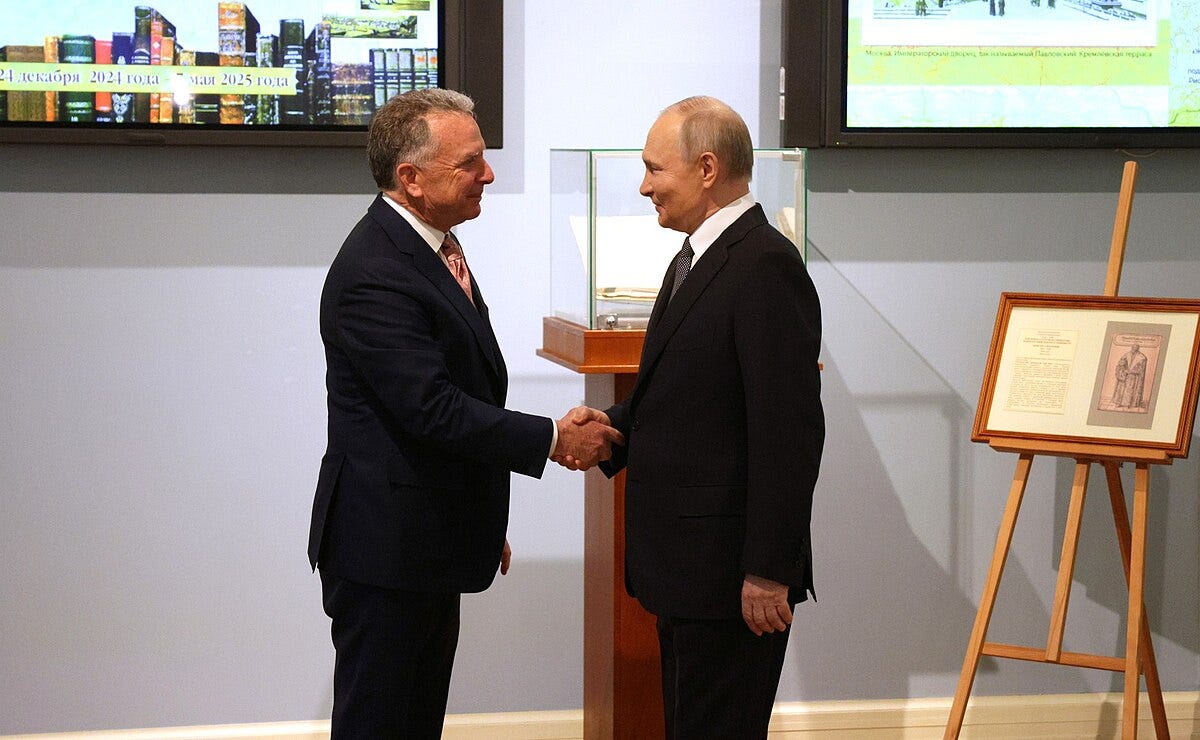
The clownish performance of Steven Witkoff, Trump's Special Envoy to Russia, has only encouraged Putin to play out this theater while continuing his war uninterrupted and making a mockery of the process. Giving background to this display, the GOP-led House of Representatives in 2024 purposefully deadlocked congressional action that caused significant delay in delivery of armament to Ukraine while the Biden administration itself had from the war's beginning provided incremental support at a pace that seemed always too late to have done the most good militarily.
With Putin's continuing intransigence regarding ceasefire negotiations, there has been some recent movement by the U.S. toward providing Ukraine with about $50 million of arms sales. Approval was also given for the provision of a support package for the operation of F-16 fighter jets in Ukraine and for the transfer of 125 long-range artillery rockets and 100 Patriot air-defense missiles from Germany to Ukraine. Not all news with the Trump administration can be positive, however, particularly with its recent choice to divert 20,000 anti-drone missiles promised to Ukraine by the Biden administration instead to the Middle East. The move occurs at a time when Russia has undertaken a protracted aerial bombardment, predominantly by drones, of Ukraine's major cities killing civilians and destroying residential dwellings and medical facilities. The reactive and unpredictable nature of U.S. support does not promise the sort of proactive intervention needed to sustain Ukraine's military efforts and force Putin to end the war.
Europe's Defense Spending
Against this mixed background of American indecision and underperformance, was it not clear to European leaders already that a significant escalation of effort was required to strengthen their communal defenses and take decisive action against widespread Russian intrusions into their own internal affairs? Moreover, with Ukraine fully engaged in directly confronting Russia, was it not a priority to ensure that it had the resources it needed not only to expel the enemy from its territory but to seriously weaken its military capability before it threatened the rest of Europe? Although interest gained through Russian foreign assets housed in Europe has been used to support Ukraine, why are not the assets themselves seized? Is it that we concern ourselves more with the legal framework surrounding a criminal's financial assets over the welfare of humanity?
These criticisms do come with the understanding that there remain differences, political and economic, among European nations that, at times, preclude timely consensus over such matters as security and defense. The European Union (EU) with its 27-member nations currently under the leadership of Ursula von der Leyen has a Common Security and Defence Policy (CSDP) headed by the EU's High Representative Kaja Kallas to deal with defense and crisis management. It does not have a standing unified military structure and is reliant in part on the Allied Command Operations (ACO) of the North Atlantic Treaty Organization (NATO) for missions. It can, however, draw upon the national armed forces of its member nations to manage conflicts and undertake peacekeeping missions as in the case of ongoing Russian-supported separatist activity in Bosnia.
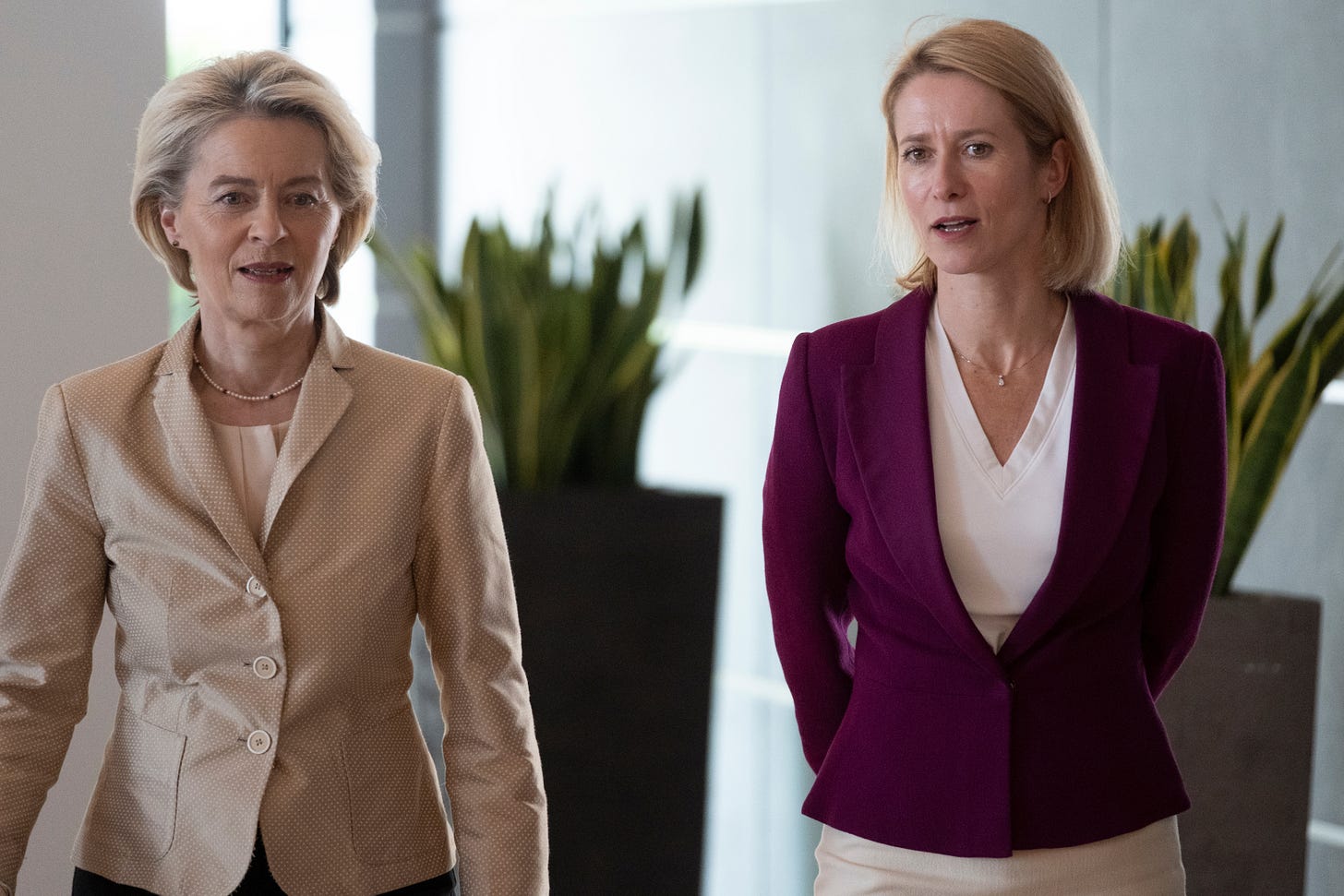
A European Defence Fund (EDF) introduced security and defense spending into the EU budget in 2021 focusing on industrial capabilities and armament. Its 2021-2027 Multiannual Financial Framework in February 2024 totaled $18.6 billion. An effort by the EU to overcome the perceived withdrawal of U.S. support now has focused on raising upwards of $900 billion for security and defense overall. As part of this effort, it includes about $170 billion in loans to member nations to support joint military procurement and finance defense initiatives. A broad consensus was achieved for this venture with backing by 26 of the 27 EU nations; Viktor Orban's Hungary abstained.
Since the February 2022 invasion, Europe has allocated $138 billion to Ukraine, $23 billion more than the U.S. For 2025, the EU has committed over $26 billion of military aid with a possible projected doubling of this effort to a further $40 billion as needed in the course of the year. The last U.S. military aid ($500 million) to Ukraine in early January 2025 under the Biden administration included air defense, air-to-surface missiles and equipment for F-16 fighter jets. In that same time, several European nations - Sweden, Denmark, Norway, Germany, the U.K. - stepped in announcing new aid packages collectively amounting to over $3.6 billion along with the EU Commission delivering its first loan of $3.4 billion.
The EU Military Assistance Mission has trained more than 75,000 Ukrainian soldiers to-date during the past number of years. To supplement the need for munitions in the current battlefield situation, a pledge was made to supply over 1.35 million artillery rounds in 2025 with a further $676 million to be spent on artillery pieces. Adding to this latter provision is a French plan to allocate profits from frozen Russian assets for maintenance of the several Caesar 155-mm howitzers already in operation in Ukraine since 2022. Furthering this has been a recent agreement between Ukraine and the EU to link its companies to the European Aerospace, Security and Defence Industries Association, allowing the sort of integration that facilitates supply and demand.
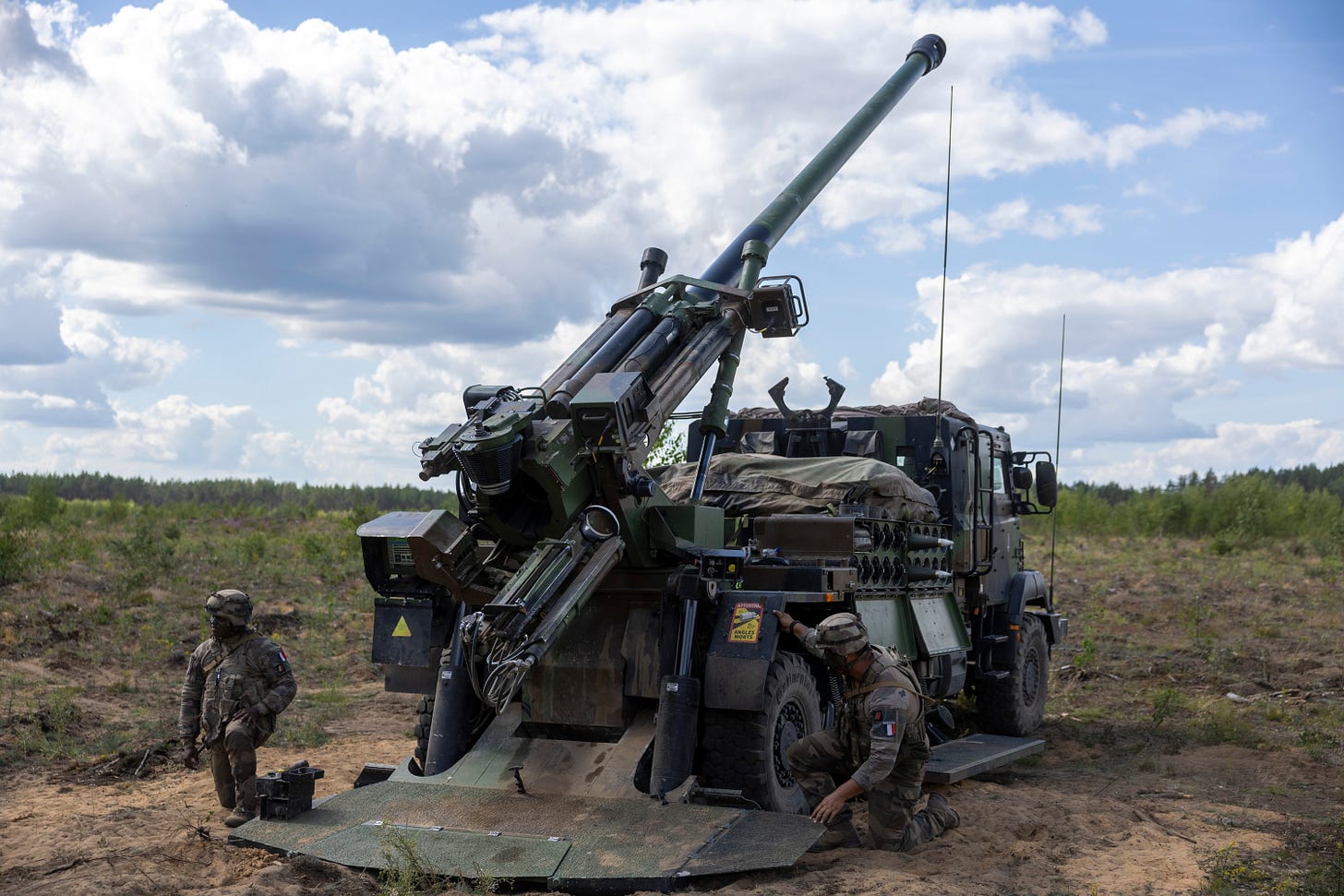
European Coalitions
Although the historically strong cooperation between NATO and the EU. has provided for cyber defense, maritime security and crisis management, the current war with Russia presents a different scale of problem. The U.S.-dominated NATO during the Biden administration behaved timidly in response to Russia's aggression in keeping with U.S. policy at the time, while with the Trump administration, it is plagued by uncertainty tied to Trump's peculiar acquiescence to Putin's wishes. The need for autonomous European defense and security has therefore become a priority particularly with the sort of antipathy toward NATO by the Trump administration. While a unified approach by the EU and other nations like the UK and Norway nearby would seem the obvious course to take, mobilizing consensus requires time which is no longer available when independence from the U.S. is suddenly a priority in the face of Russia's threat.
Group of Five
As a consequence, smaller coalitions of like-minded governments have arisen to deal with the impending threat. A "Group of Five" meeting composed of Europe's largest military spenders brought together Germany, Poland, France, Italy and the UK in November 2024 in a concerted effort to enhance and expedite aid for Ukraine. Each was otherwise undertaking significant investment in their respective defense environments. They are likely to form the core of coordinated resistance against Russia in the absence of effective U.S. and NATO intervention.
Germany has created a $547 billion defense and security infrastructure fund. Military expenditure overall for 2024 was $88.5 billion while in 2025, it will amount to 1.9% of its GDP, a 28% increase from 2023. A $1.7 billion order was placed for 50 Puma infantry fighting vehicles (IFVs) in 2023 and plans made for the acquisition of an additional 105 Leopard 2A8 tanks in 2024. Defense Minister Boris Pistorius confirmed Germany's commitment to purchase 35 F-35A aircraft, the U.S. fifth generation stealth fighter, with deliveries expected to begin in 2026.
Rheinmetall AG, one of Europe's leading defense manufacturers and a key artillery supplier for NATO will scale up its annual artillery shell production to 350,000 rounds. It acquired the Spanish defense company Expal Systems in 2023 with an expected annual production of 450,000 rounds. Additional production facilities in Germany as well as in Lithuania, Latvia, Estonia, Denmark and Ukraine will contribute to an uninterrupted supply of munitions to deal with not just the war in Ukraine but any threat beyond. Germany and Ukraine most recently have signed a $5.6 billion deal which includes German financing for production of long-range weapons in Ukraine, as well as new contracts for air defense systems, munitions, logistics and satellite communications.
Poland has introduced voluntary military training for all males and is expanding its military to 300,000 personnel. In 2024, defense spending climbed to 4.12% of GDP with a 2025 projection indicating further growth to 4.7%. An order was placed for 180 South Korean K2 tanks and 366 Abrams tanks which will supplement the 247 German Leopard 2 tanks currently in operation and which are also scheduled to be modernized by 2027. Upgrades have been underway for the Borsuk and Rosomak IFVs with a framework deal for 1,014 units. To modernize its artillery, Poland has ordered 218 K0A1 155-mm self-propelled howitzers (SPHs) from South Korea and an additional 170 Krab SPHs produced by Poland’s own defense company, Huta Stalowa Wola (HSW).
Over $22 billion was committed toward military aircraft and accompanying munitions, specifically for U.S. Apache attack helicopters, F-16V and notably 32 F-35A jet fighters. An additional 48 FA-50 light attack fighters have been acquired from Korea Aerospace Industries (KAI). Poland's borders with Belarus and Kaliningrad are being reinforced with minefields, anti-tank impediments and sophisticated surveillance systems over approximately 435 miles at a cost of $2.7 billion; all of this to impede a possible attack by Russian forces from the north and east.
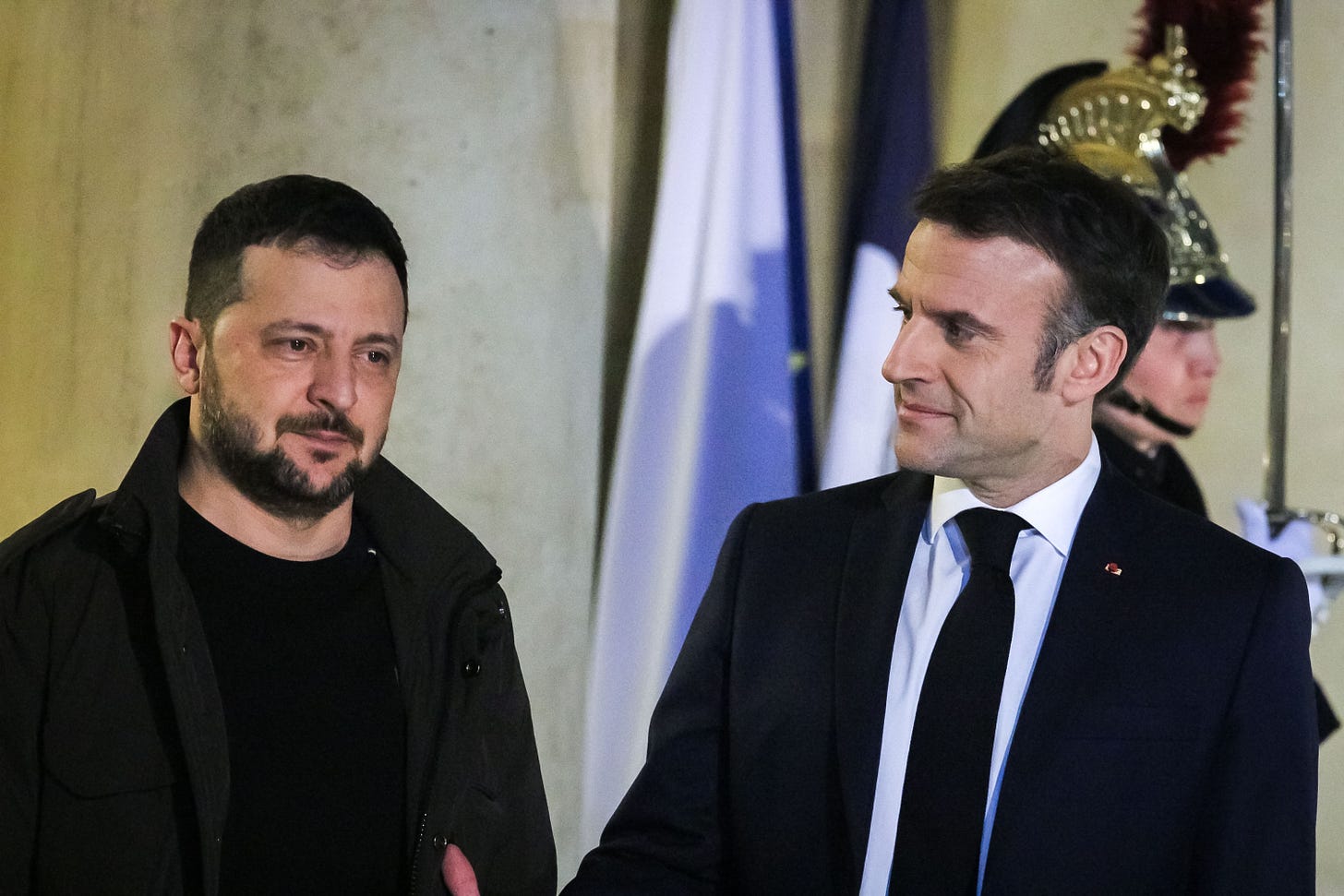
In France, President Emmanuel Macron has opened the debate regarding the sharing of his nation's nuclear umbrella with Europe in addition to accelerating reindustrialization in support of the military in all regions. The defense budget has increased to over $57 billion and will continue to grow in the next five years. The defense industry company Eurenco has opened a new plant in Bergerac in southwest France and will produce almost 2,000 tons of gunpowder annually, primarily for artillery use. In concert, the munitions firm Europlasma recently acquired a foundry in Bretagne to transform its production of automobile parts to a daily output of 24,000 metal casings for artillery shells. The French military recently placed a $5.5-billion order to Dassault Aviation for 42 more Rafale fighter jets and has requested 109 Caesar howitzers at a cost of $378 million from the KNDS subsidiary Nexter which aims to produce 12 howitzers per month in 2025. The popular Caesar howitzer has otherwise been deployed to Lithuania and Ukraine where a further 144 units are planned for delivery in 2025.
The United Kingdom (UK) has announced major investments to upgrade its military, joining in the EU's defense fund initiative. Europe's largest defense industry, British Aerospace (BAE) Systems, has increased production capacity for ammunition and plans to grow production of its 155-mm artillery shells 16-fold over the next five years with plants operating 24 hours daily. It has added 15,000 workers during the previous five years and invested an additional $1.1 billion in the UK. BAE has also partnered with Rheinmetall to manufacture the Boxer IFV. and as part of a $5 billion investment, it will provide 623 Boxer vehicles along with 148 Challenger 3 tanks. The British defense firm, Babcock, secured a five-year $1.8 billion maintenance contract to ensure combat-readiness of military assets including Challenger 2 tanks, 105-mm artillery guns and the Trojan armored engineer vehicles used to breach minefields and other tasks

.Italy's Finance Minister, Giancarlo Giorgetti, announced defense spending would climb to 2% of GDP in 2025 or $43 billion after 2024 military procurement outlays almost doubled from $6.2 billion in 2020 to $10.6 billion. This has included a commitment to purchase 25 F-35 fighters for about $8 billion, adding to the 90 previously ordered. Also on order are Gulfstream aircraft used for early-warning signal-intelligence and electronic attack. Ten next generation SAMP/T air-defense systems, produced by France's Eurosam, will provide cover from aerial attack, including hypersonic missiles.
A joint venture between Germany's Rheinmetall and Italy's Leonardo S.p.A. will provide 1,050 Lynx KF41 IFVs and 132 Panther KF51 tanks for an investment of $8.4 billion. For Italy's navy, another joint venture between Italy's Fincantieri and Leonardo S.p.A. recently delivered a ninth multi-role frigate in a series of 10 new European multi-mission frigates (FREMM) as part of an Italian-French international cooperation agreement. These vessels are equipped for anti-submarine warfare in addition to their general tactical flexibility.
The Nordic Group
The Nordic nations - Denmark, Norway, Sweden and Finland - constitute another collaborative regional entity. Russia's sabotage of undersea communication cables in the Baltic Sea serves as a notable example of malign activity threatening security in the region. The recent expansion of Russian military infrastructure alongside the Finnish border adds to the concern that Putin continues to posture toward confrontation of some sort. A northern European defensive initiative dates back to 2008 when the Nordic Defence Cooperation (NORDEFCO) was originally created to pool resources for weapons procurement and maintenance. After Russia's 2014 invasion of Ukraine, its mission became focused upon regional security through shared intelligence, joint military exercises and facilitation of mobility.
As of March 2023, the Nordic air forces developed an integrated command and control infrastructure within NATO for flexible deployment, airspace surveillance, logistics, rapid reinforcement capability and joint exercises. Denmark, Norway and Finland operate Lockheed Martin F-35 fighter aircraft whereas Sweden is equipped with the Saab JAS 39 Gripen which does not have stealth technology although planning for that is underway. In similar fashion, the land forces have secured joint operational plans with integration across borders for large-scale combat operations.
The Baltic States
It would seem appropriate that the Nordic collaborative group align as well with the Baltic nations were it not for the inconvenience of regional geography. Estonia, Latvia and Lithuania form a relatively isolated bloc separated from Finland by the Gulf of Finland in the north and sharing only a 65-mile border, the Suwalki Corridor, with Poland to the south. The width of this Corridor varies from 37 to 62 miles which connects Russia's ally Belarus with the Russian exclave, Kaliningrad, to the west. It presents a vulnerable gap for Russian military exploitation. In the absence of a suitable land connection, Baltic Sea operations would not suffice as security. Beyond their present NATO membership, the three nations do not have a formal military alliance but collaborate on security and defense with shared intelligence in addition to undertaking joint military exercises. Estonia and Latvia share a contiguous 359-mile eastern border with Russia whereas Lithuania shares its 422-mile eastern border with Russian ally, Belarus. To help secure this eastern border, Germany has recently deployed troops to Lithuania with plans to establish brigade strength of about 5,000 combatants within NATO's eastern flank by 2027.
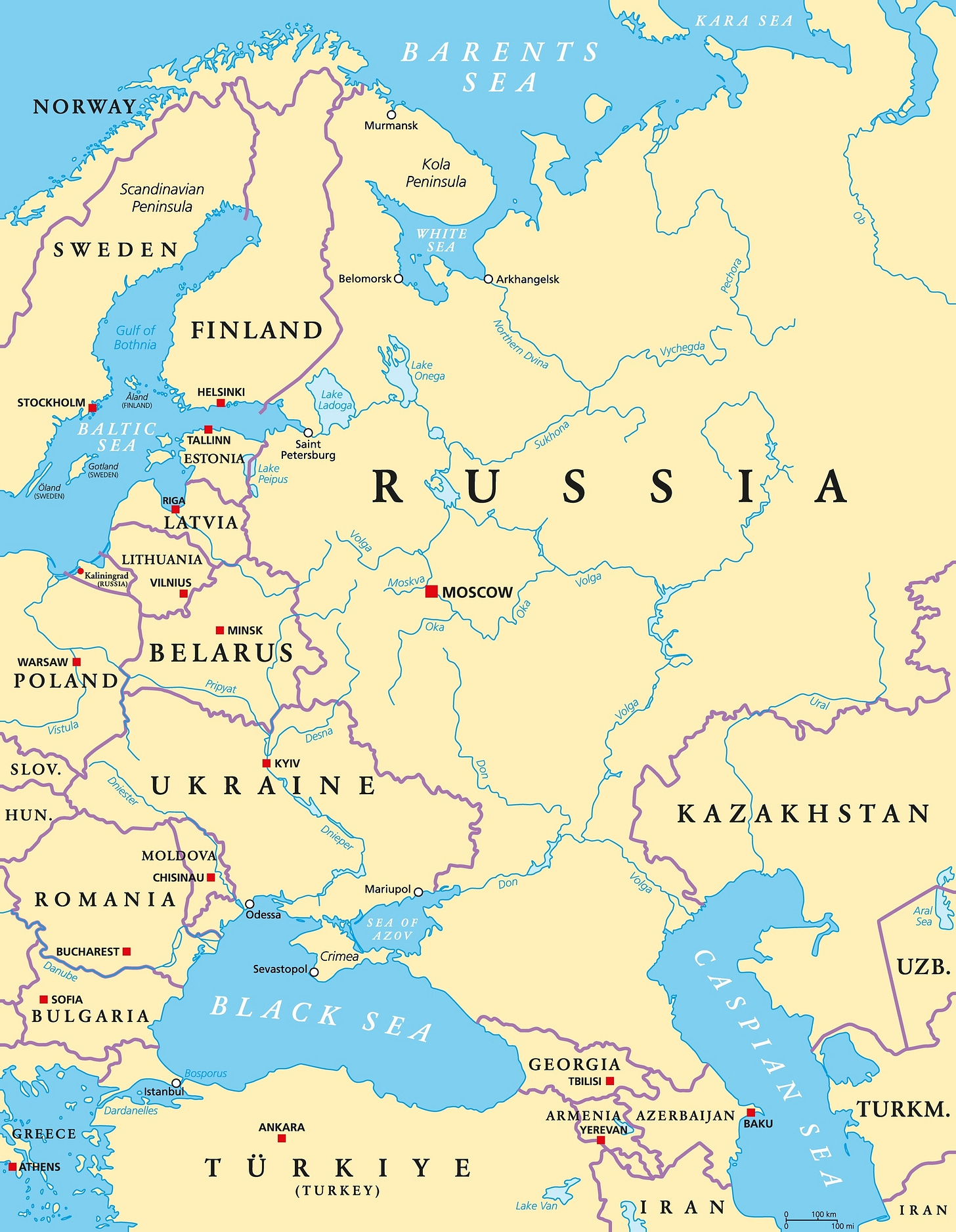
For its part, Lithuania will raise defense spending to $3.5 billion or 3.9% of its GDP and plans to purchase 44 German Leopard 2A8 tanks and 100 Swedish CV90 IFVs with intentions of developing its own defense industry through private investment. Rheinmetall is already constructing an ammunition plant in Lithuania to make 155-mm artillery shells. Latvia to the north has set 3.45% of its GDP for defense spending in 2025 and will increase this to 4% in 2026 with a long-term goal of 5%. Its priorities likewise will provide for procurement of IFVs, drone and counter-drone system development, air and coastal defense and ammunition production. Estonia recently approved a supplementary defense investment plan allocating 5.4% of its GDP on average and budgeting $3.2 billion over four years. It will focus upon building out air defense, artillery and drone capabilities, and electronic warfare.
The Bucharest Nine
The Bucharest Nine (B9) is a regional collaboration of nine NATO nations comprising the alliance's eastern flank made up of Bulgaria, the Czech Republic, Estonia, Latvia, Lithuania, Poland, Romania, Slovakia and Hungary. It was established through efforts by Polish President Andrzej Duda and former Romanian President Klaus Iohannis soon after Russia's 2014 invasion and annexation of Crimea to promote a collective security and defense cooperation. This would be done through military infrastructure development focused upon air bases, naval ports, logistical and command centers. The B9 has aligned with the EU and, given its proximity to the conflict zone, has become a significant factor in NATO's strategic deterrence and future staging area. It has prioritized support for Ukraine and neighboring Moldova in the face of Russian hybrid and overt military threats.
Apart from Poland and the Baltic nations, defense spending among the other B9 nations is increasing beyond 2% of GDP with Romania committing to 3.5% for a $9.1 billion military upgrade, an increase from 2.25% in 2024. Also in 2024, its Ministry of National Defense contracted for 54 K9 Thunder self-propelled 155-mm howitzers with South Korea's Hanwha Aerospace. More recently, it signed for an initial acquisition of 246 Cobra II IFVs with the Turkish defense company Otokar. and a further 150 Piranha 5 IFVs manufactured by General Dynamics European Land Systems to add to its current fleet of 142 IFVs. These along with the acquisition of 54 M1A2 Abrams battle tanks will equip up to 15 of Romania's army battalions. Additional purchases will include 32 F-35A fighter jets, new Patriot missile systems and four Sentinel air-surveillance radars.
Romania possesses 152 miles of the Black Sea coastline extending from Ukraine in the north to Bulgaria in the south. The Romanian Navy has been in the process of a significant upgrade by replacing its aging Soviet era vessels with two new French-designed Scorpene-class submarines, two UK Sandown-class mine countermeasures (MCM) sweepers, and four French Gowind type corvettes. In December 2022, Raytheon was awarded a $209 million contract for the Naval Strike Missile (NSM) Coastal Defence System consisting of mobile anti-ship missile launchers with a command-and-control center, and transportation vehicles with optional surveillance and tracking radar.
The Czech Republic spent over 2% of GDP in 2024 on defense, amounting to $7.25 billion, after more than doubling its defense budget from 2021, particularly after Russia's invasion of Ukraine. Its military procurements have included 24 F-35 fighter jets, two C-390 military transport aircraft, 246 CV90 IFVs and 77 Leopard 2AB battle tanks. Bulgaria spent 2.18% of GDP or $2.3 billion on defense in 2024. Both naval and air defenses are prioritized to guard its 235 mile long Black Sea coastline. The first of 16 F-16 fighter jets was delivered in January 2025. Its navy has contracted with Germany's NVL Group to build three corvettes carrying anti-air and anti-ship missiles, torpedoes and cannons to deliver tentatively during 2025. Further plans are to equip its land-based forces with 198 Stryker IFVs with a value of $1.2 billion and 107 Javelin anti-tank missiles for $153 million.
In 2025, Hungary expects to spend $4.8 billion on national defense, slightly above 2% of its GDP. The 2024 defense budget allotted 47.8% for equipment procurement and research and development. Recent modernizing of its military has included the purchase of 218 of Rheinmetall's Lynx KF-41 IFVs, 45 of which were delivered in early 2025. Coupled with this was the addition of 48 Leopard 2A7HU tanks, 24 of which have been delivered and some of which were domestically produced. These will replace the much older Soviet-era T72M1 tanks from 40 years ago. French Mistral air defense systems were purchased in 2023 and further systems purchased from Norway and the U.S. will be installed in the northeast where Hungary borders Ukraine apparently because of the ongoing conflict with Russia.
Slovakia has met the standard 2% of its GDP for defense but has been reluctant to increase it further. With a population of about 5.5 million, its land forces numbered about 14,300 in 2023. It possesses 5 F-16C/D Fighting Falcon aircraft at its military airbase in Kuchyna although it has an order of 14 in total still to be completed and due for delivery in 2026. A purchase of 152 CV90 IFVs for $1.37 billion was made in December, 2022 with an expected delivery beginning in 2026. The Armed Forces currently operate 30 outdated Soviet-origin T-72M1 tanks and 15 Leopard 2A4 tanks but is intending to acquire up to 104 new tanks with a purchase offer likely in 2025.
Both Slovakia under Prime Minister Robert Fico and Hungary under Prime Minister Viktor Orban have taken a pro-Russian stance at odds with the remainder of the EU and with the remaining B9 nations. Rather unwisely, they have become dependent upon Russian energy resources and have faced pressure to seek other sources. They have likewise been opposed to supporting Ukraine. It is therefore uncertain whether they can be relied upon to engage in any effort to confront Russia itself under these circumstances. Moreover, Hungary's revanchist far-right Our Homeland party has promoted claiming Transcarpathia in western Ukraine for Hungary should Ukraine lose its war with Russia. This is despite Hungarians constituting only 12.1% of the population in the region. This effort was prompted by Russian propaganda and made more evident when 11 Ukrainian prisoners-of-war of Hungarian nationality were transferred by Russia to Hungary, bypassing Ukraine. There also remains a question of whether Hungary was preparing an incursion into Ukraine during the initial phase of Russia's February 2022 invasion.
The Place of NATO
In preparation for this year's NATO summit in The Hague on June 24-25, a meeting in Vilnius, Lithuania of the heads of state from the B9 and Nordic nations took place recently to prioritize the specific issues pertaining to Ukraine's defense and the strengthening of eastern Europe's deterrence shield. Coordination of this sort is a necessity given Russia's military presence within Ukraine and its posturing in relation to the Baltic nations and Finland.
The Vilnius meeting was co-chaired by Lithuanian President Gitanas Nauseda, Polish President Andrzej Duda and Romanian President Nicusor Dan, and attended by NATO Secretary General, Mark Rutte, and Ukrainian President Volodymyr Zelensky. The nations collectively pledged to increase defense spending to at least 5% of GDP, potentially in the form of a split between 3.5% for core defense and 1.5% for dual-use technology. Apart from reiterating support for Ukraine including its ultimate membership in NATO, agreement was reached on adopting further sanctions, calling out Russia's accountability for its war crimes and the need for reparations, reaffirming that its frozen assets would remain so until compensation was fulfilled.
It's difficult to surmise what sort of backroom discussions may have taken place with representatives from Hungary and Slovakia in the absence of both Orban and Fico. The latter two met in Budapest recently on the occasion of the CPAC Hungary 2025 conference to apparently discuss energy security given their nations' dependence on Russian fossil fuel resources and the European Commission's plan to abandon import of Russian natural gas by the end of 2027. Both countries could face loss of EU funding for their refusal to abandon reliance on Russian fuel despite long-term risks of Russian political leverage. What may result ultimately is an ostracism of Hungary and Slovakia from EU decision-making as it pertains to security matters. Political turbulence in both countries resulting from their leaders' pro-Russian stance and EU backlash may ultimately unseat their respective ruling regimes.
Epilogue
Europe has witnessed Russia's debacle in Ukraine for over three years, enough to expose its considerable military and resultant economic shortcomings while it continues to cope with the Kremlin's malign activities that attempt to undermine political will and security within the EU. The continent as a whole has significantly escalated its preparedness to confront Russia in addition to providing necessary aid to Ukraine and it appears ready to assume its rightful role in defense of its territorial security. American aid unfortunately has shown itself to be inconsistent, incomplete, and simply unreliable in the long term.
Russia otherwise has shown itself in the end to be a rogue state led by a criminal regime that has impoverished and embarrassed its people by a war it started just over three years ago with a nation 28 times smaller than itself. Putin will not win here nor anywhere else in Europe. He is a relic of the past century and a derivative of the preceding one with their outdated and grandiose notions of conquest and domination. His regime must come to an end and the world must get on with sweeping aside similar regimes with similar ambitions.
Copyright @Kost Elisevich, MD, PhD 2025. All rights reserved. Any illegal reproduction of this content will result in immediate legal action.

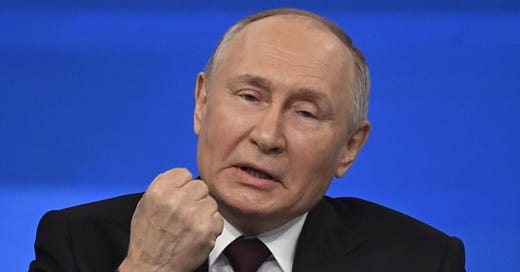


This excellent article brings to mind the statement by Sir Edward Grey, Britain's foreign secretary at the start of World War I: "The moral is obvious; it is that great armaments lead inevitably to war." While war is, unfortunately for Ukraine, already a reality, and correlation is not causation, and I certainly agree that Europe must prepare itself to deter and if necessary, defeat Russia should he time come, this just makes me feel that the situation will not end well.